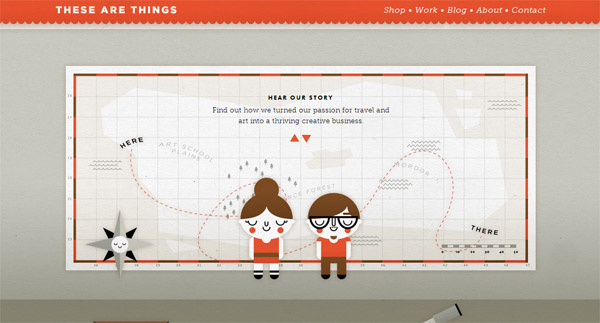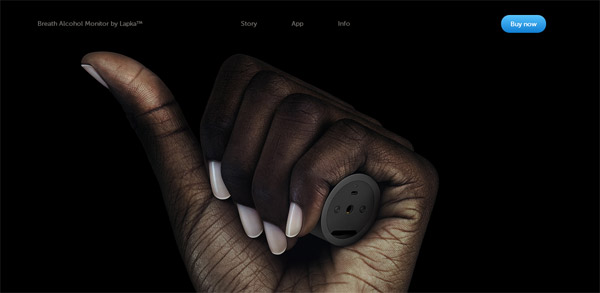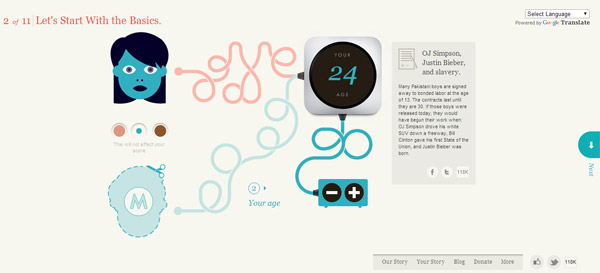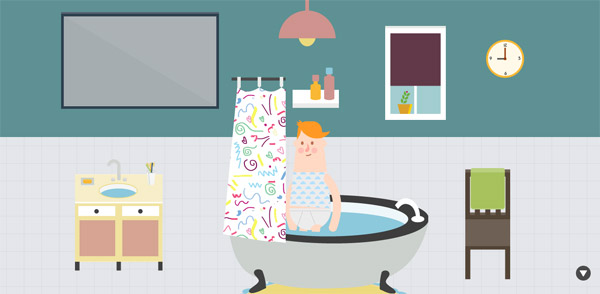How to Use Storytelling to Design Delightful UX
Since the beginning of time good storytellers have been the heart and soul of any community. They have enjoyed popularity and sympathy of their fellows, who kept coming for more stories and tales.
Little has changed since then. We are still hungry for a really good story.
What has changed is the way we reach people and communicate our stories.
Storytelling is an art that can be applied to pretty much anything. You don’t necessarily have to be a fiction writer or a travel blogger to make use of good storytelling. And by saying “stories” we no longer mean only words, but a number of media and techniques that together create a meaningful and emotional experience.
But how do stories affect human behavior?
Studies have shown that our brain loves stories. When we read or hear a rational, emotionless statement or a raw affect, it activates the language processing parts in our brain and nothing else.
While when listening to a narrative, our brain acts quite differently, as if it is experiencing what is described in the story.
The brain, it seems, does not make much of a distinction between reading about an experience and encountering it in real life; in each case, the same neurological regions are stimulated. NY Times
This means that stories relate to the users much more then bulleted feature lists, call-to-actions and marketing messages. People seems to be more affected by personal stories, even though those are very often made up.
Think about Tripadvisor. It’s the number one travel website for anyone looking for hotels, destinations, restaurants, etc. Users go to Tripadvisor to read personal stories about hotel experiences, to see real-life photos and videos of the hotel. They don’t want the standard marketing pitch, they want the story… in whatever format.
Visual storytelling is what you need to master.
How Does Storytelling Fit into UX?
You may think that storytelling doesn’t really apply to user experience and is more of a writing technique for bloggers, but that’s just one part of it. Storytelling can be applied in user experience design in two ways;
- Stories as a research tool.
User experience research and design process involves a lot of user data analysis which then needs to be put in context of the product usage.
As described in “Storytelling for User Experience” by Whitney Quesenbery and Kevin Brooks, “Stories are a way of connecting what you know about those people (your users) to the design process, even if they can’t always be part of your team.” - Stories as a part of user experience.
Storytelling can also be a great way to communicate the purpose of a digital product or website and engage with the user on a more emotional level. Visual storytelling combined with well-crafted microcopy can create a stronger connection with the customer and a higher level of satisfaction. In this case the user experience design is built around one story that relates to the end user and at the same time makes for a usable and delightful experience.
Storytelling in UX Research
In-depth user research and analysis prepares the ground for a great user experience and thus cannot be overlooked. But sometimes it becomes difficult to communicate the research data and findings to the whole team. And this is where storytelling comes in handy.
It all starts with contextual user interviews and secondary data analysis, which will then be used to create the most basic user archetype: persona.
A user persona is a fictional character representing a cluster of users with similar behavioral patterns in terms of product usage. Though user personas typically features raw demographical data and just a few lines about the character, but storytelling makes it easier to further develop personas into scenarios and storyboards.
Scenarios
From a user experience perspective a scenario is basically a story about the user outlining the context in which he/she uses the product. Scenarios tend to be more detailed to provide insights in to the who, what, when, where, why and how of the product usage. Scenarios are a handy tool in user interface design, when you need to understand the context and specific goals of the user.
Storyboarding
Although this is not a new tool, storyboarding proves to be very useful in user experience design. It puts everything in perspective and lets you see how the user finds and interacts with your product step-by-step. You have probably heard of storyboarding as a technique used in movie making. A storyboard looks like a big comic highlighting key scenes.
In user experience design, the storyboard may not necessarily look the same. It may combine drawings, text and other elements that visualize the user’s interaction with the product. It ties together the information you have gathered about the user, his goals and expectations, as well as the path he takes and the channels he uses during the interaction process. It highlights the possible issues and its solutions. In brief, it helps UX designers think.
Storytelling as a Part of User Experience
Every digital product has a message and storytelling makes it easier to communicate that message in a more interactive and engaging way. From a user experience perspective the story evolves in every element of web design and it is essential to keep it smooth and comprehensible each step of the way.
A well-crafted UX story is composed of these three main elements:
-
The narrative/ message.
This is the main idea, the ultimate goal of the product, what you have to offer to your user. In other words this is the core content, which may appear in many different formats; text, video, images, illustrations, audio content. Very often web designers opt for parallax scroll technology as a great way to keep users engaged and interact with the website while experiencing the story.
One of the best examples is www.everylastdrop.co.uk. The website takes you on a short journey explaining just how important it is to save water. As you scroll down you learn more stats on water waste and finally gives clues on what you can do to change that. There is a clear narrative with a conclusion and a simple call-to-action. -
The tone.
Finding the right tone for a website is essential in user experience. Your tone is practically the way you communicate, the mood you are in. You can shape your website tone through things like, specifically chosen typography, colors, interaction types, etc.
-
The personality.
Before you decide on the voice and personality of your website or digital product you need to clearly understand your audience and be able to predict the response on their part. Your website personality is a composition of the language, the intonation and the atmosphere reflected in every design element and piece of content.
Final Thoughts
Everybody loves a good story. So why not use that for a better user experience? Try to define the story behind your product and design it accordingly. Infuse some emotion into the web design, make it more personal and memorable. This way you will have a product that is more than just functional, but also delightful.




